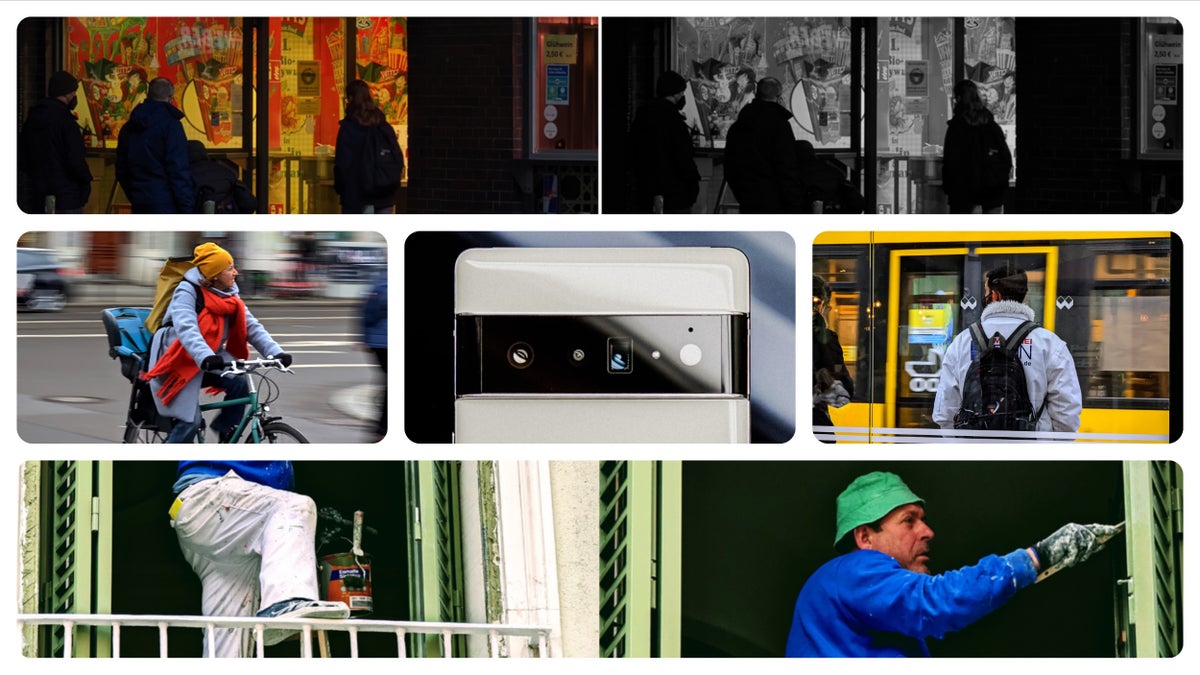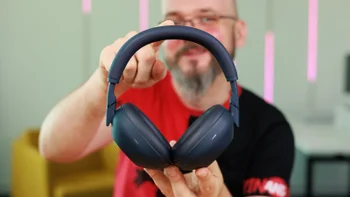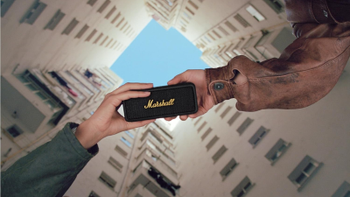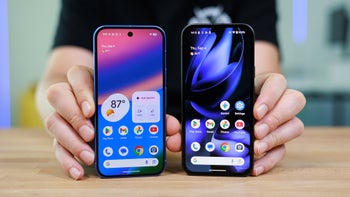Pixel 6 Pro camera after 6 months: The best Zoom, Portrait Mode, and Action photos you'll ever take
This article may contain personal views and opinion from the author.

A love letter is an expression of love in written form. However delivered, the letter may be anything from a short and simple message of love to a lengthy explanation and description of feelings.
Pixel 6 Pro is easily one of the most fun camera phones I’ve used. I think I love it...
While standard, wide-angle shooters are deemed “the default” camera and will certainly perform best in challenging lighting conditions, photos taken with them tend to look… amateur. It’s not that you can’t take a great photo with the wide-angle camera on your Pixel 6, iPhone 13, or Galaxy S22. It’s just that doing so requires some practice, and skills.
The other thing that wide-angle photos lack is bokeh. Obviously, in order to get any background blur, you’ll have to get close to your subject, but the nature of a wide-angle shooter is to start distorting when you get too close... physically. This results in less flattering portraits, as well as altered shapes of objects.
Fringing is another issue that’s virtually unavoidable when trying to take a closeup photo with a wide-angle lens. This is when the edges of your subject aren’t perfectly in focus. The phenomenon is mostly present on cameras with big sensors and wide apertures, meaning virtually no modern flagship phone isn't immune to it.
Pixel 6 Pro: The best periscope zoom camera out there
Image 1: 4x (left), digital in post (right); Image 2: 1x (left), 4x (right); Image 3: 4x (left), 4x (right); Image 4: 4x (left), 4x (right); Image 5: 4x (left), 4x (right)
Thanks to the tight FoV, framing a pro-grade shot with the 4x camera of the Pixel 6 Pro, is a piece of cake, which is why I use it way more often than I thought I would. The natural bokeh of the biggest sensor we’ve ever seen on a phone zoom camera, and short focusing distance, results in some stunning pictures that you can’t get anywhere else.
Seriously, you’d never guess some of the 4x photos taken with a Pixel 6 Pro came from a phone’s camera. This truly special shooter helps when taking portraits of people and everyday objects.
Yes, I’m here to tell you that the Pixel 6 Pro can take some of the best “Portrait Mode” photos you've ever seen come out of a phone, without even using Portrait Mode.
Pixel 6 Pro: How to take the best and most realistic Portrait Mode photos you’ll ever take
Image 1: 4x, no editing (left), added background blur in post (right); Image 2: 4x, no editing (left), 4x, no editing (right); Image 3: 4x, no editing (right), zoomed in post (left); Image 4: 4x, no artificial bokeh added
I dare you to find any imperfections on these portrait photos. OK... Don't waste your time. There aren't any imperfections, because the photos aren't taken using artificial Portrait Mode.
So, let me explain why you can see the individual fibers (and lint) on my super-blue socks.
1. Avoid using the dedicated Portrait Mode
“Portrait Mode” on Pixel 6 and 6 Pro yields oversharpened and over processed photos, specifically on the 2x zoom setting (which uses digital magnification), while 1x photos simply don’t offer that portrait photo feel. So, instead of wasting your time with Portrait Mode, switch to the 4x zoom lens, and get just far enough from your subject so the camera is still able to retain focus.
The focusing distance of the Pixel 6 Pro's 4x camera is much shorter than you might expect, which is why you can get some beautiful natural bokeh that will look more convincing than any Portrait Mode photo you’ll ever take with an iPhone or a Galaxy. It also means that this camera isn’t exclusively meant to be used for “zooming”, which is an awesome perk.
If you get this message, you can often trick the Pixel 6 Pro by pointing the camera to something in the distance and bringing it back to the subject. Unless you really are very close, this should let you use the 4x camera and nail focus, while being as close to your subject as possible - for that sweet natural bokeh.
I've discovered that the Pixel 6 Pro will let you use the 4x zoom lens even if you're less than 1m/3ft away from your subject. This might vary depending on the lighting conditions.
3. If you still want more bokeh/blur for your 4x portrait shots
If you find that the photo could do with some more background blur (I rarely do), simply head to Photos > Edit > Tools > Blur. Google's Photo Editor allows you to add artificial bokeh to photos with a standout subject after they were taken, or even if they weren't taken on a Pixel.
3. If you still want more bokeh/blur for your 4x portrait shots
If you find that the photo could do with some more background blur (I rarely do), simply head to Photos > Edit > Tools > Blur. Google's Photo Editor allows you to add artificial bokeh to photos with a standout subject after they were taken, or even if they weren't taken on a Pixel.
The other big advantage here is that the processing will be working on a photo with already existing natural background blur, so adding computational blur around the already defined edges of your subject won't result in a fake-looking portrait photo. Just be gentle with the amount of artificial blur you apply.
If this seems like too much work, be sure that once you try it out, it’ll quickly start to feel like second nature. You just hit the 4x zoom button, get your subject in focus, and snap away. It doesn't require much more effort than using Portrait Mode.
As you can tell, it’s hard to put this camera down. But apart from the impressive 4x lens on the Pixel 6 Pro, Google’s device comes with a set of magical camera features, courtesy of Google’s powerful software.
Sure, most of the people I meet tend to be mind-blown by the Magic Eraser, and yes, this is indeed a super impressive trick. But it doesn’t necessarily fall into the “photography” bracket of the Pixel’s camera wizardry.
The literal showstopper coming with the Pixel 6 and 6 Pro is something called Action Pan. This feature lives inside the Motion toggle of the camera interface, alongside the Long exposure mode, which is also very impressive, although I don't use it much.
If this seems like too much work, be sure that once you try it out, it’ll quickly start to feel like second nature. You just hit the 4x zoom button, get your subject in focus, and snap away. It doesn't require much more effort than using Portrait Mode.
Action Pan, Long Exposure, Magic Eraser: The Pixel 6 Pro’s camera goes beyond hardware
Collage: All photos taken with Action Pan at 4-8x zoom; Magic Eraser (before and after); Action Pan (ultra-wide-angle camera)...
Sure, most of the people I meet tend to be mind-blown by the Magic Eraser, and yes, this is indeed a super impressive trick. But it doesn’t necessarily fall into the “photography” bracket of the Pixel’s camera wizardry.
Note that both Action Pan and Long Exposure have been in beta since the launch of the Pixel 6 and 6 Pro six months ago. Nevertheless, they perform admirably well.
It works with all three cameras too, making for some absolutely unbelievable perspectives, which you won’t be able to get anywhere else. Shockingly, apart from the 4x zoom lens, the ultra-wide-angle camera also combines really well with this feature, making for some of the most dramatic photos I've ever seen come out of a phone's camera.
Sorry, team Apple, and Samsung. Google's the drama queen now.
Although it might seem like a gimmicky feature at first, Action Pan is a godsend for lazy social media photographers. Do you want to trick your friends into thinking you’re a pro? This Pixel 6 Pro feature might be the quickest way to do that.
Speaking of gimmicks, we’ve seen a ton of overly ambitious camera features from phones in the past, both hardware and software. And to be honest, while watching the Pixel 6's reveal, I was ready to welcome Google into the Gimmick club. But no.
All in all, Magic Eraser can literally rescue some unusable photos by letting you remove unwanted subjects. It even works with older pictures taken with other devices, which is more than I’ve ever asked for.
All of this, combined with the vastly improved video taking capabilities of the Pixel 6 Pro, excellent low-light performance, and consistent results, makes Pixel 6 Pro the best, and easiest to use smartphone camera for me.
In the end: I wouldn't trade the Pixel 6 Pro's camera for any other, but...
All that being said, the Pixel 6 Pro's camera system is far from perfect. Just like any other phone camera.
For starters, remember the portrait photos I praised? They are amazing, but taking them shouldn't feel like a workaround. I'm well aware that the average Joe won't figure out how to take a great portrait photo with a Pixel, which is why I wrote this piece, but enabling Portrait Mode photos with the 4x camera of the Pixel 6 Pro and Pixel 7 Pro is an absolute must.
Google, what are we waiting for?!
I’m also hoping Google will upgrade the Pixel 7 series with a new, and much better ultra-wide-angle camera, which is where the Pixel 6 and 6 Pro fall behind the competition as of now. For starters, the ultra-wide-angle shooter on the Pixel 6 series isn’t all that wide, but it also performs poorly in mixed and low light conditions, especially compared to the primary and zoom shooters, which are incredible. The only thing that rescues it and allows for usable photos is Google’s powerful post-processing.
And finally, I believe the Pixel 6 Pro takes some of the best videos in the Android world, without excessive oversharpening, and with nicely controlled shadows and highlights. However, I’d like to see less noise in low light (especially from that ultra-wide-angle lens), sensor-shift OIS for smoother footage, and further improved HDR to match that of the iPhone 13 series.
I know I’m asking Google to achieve something that no Android phone-maker has ever managed to - match Apple’s video game, but if Google can’t do it, I’m not sure who can…
P.S.: I'm not the biggest fan of selfies, but the Pixel 6 Pro's selfie shooter is pretty good. Just one thing... Google, can we give the Pixel 7's selfie camera autofocus? Please.
Disclaimer: All photos taken with Google Pixel 6 Pro, some of which are color-tuned to my liking. Image quality is affected by the website's usual compression, meaning the actual images show far greater detail - also applies to any other photo we share here, taken by any phone.
Follow us on Google News














Things that are NOT allowed:
To help keep our community safe and free from spam, we apply temporary limits to newly created accounts: